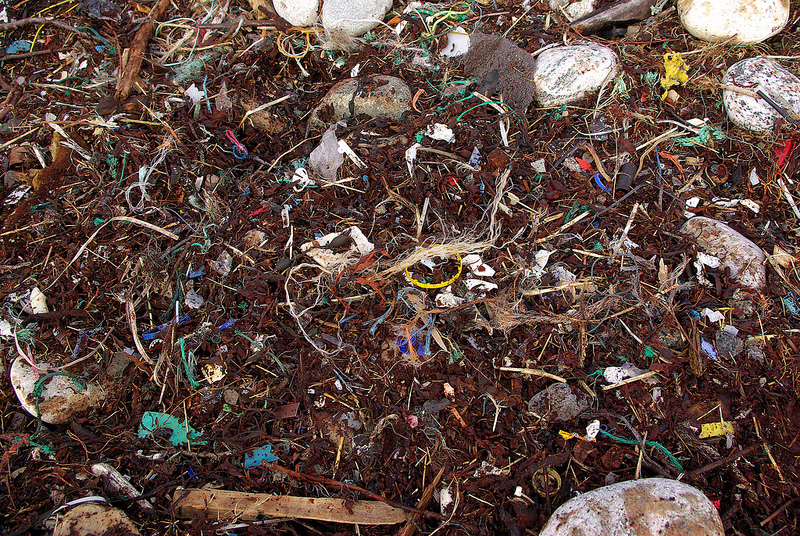The International Joint Commission (IJC) invites public comment on its Preliminary Recommendations on Microplastics in the Great Lakes for binational, science, policy, and education solutions to microplastic pollution.
Microplastics can enter the Great Lakes in multiple forms and through multiple pathways, including wastewater, manufacturing processes and runoff. They may enter the lakes as already-small debris such as plastic microbeads from cosmetics, pre-production pellets and waste from manufacturing processes, and microfibers shed from plastic-based textiles, or through larger plastic pollution like straws or bags that break down into smaller plastic particles. When microplastics enter the lakes they can be ingested by fish and other aquatic animals. These particles can harm aquatic species and can potentially be passed on to the humans who consume them.
The IJC acknowledges microplastics as a potentially significant threat to the Great Lakes ecosystem and human health, and the proposed recommendations reflect the significant knowledge gaps and need for further information to address causes and impacts of microplastics.
The IJC’s four recommendations:
- encourage a binational pollution prevention plan utilizing multiple approaches and tools,
- propose developing science-based, standardized, binational monitoring and research into product lifecycles, human and ecological health impacts, and best prevention practices,
- advise governments to examine, promote, and support pollution reduction and prevention programs that are existing and effective, and
- advocate funding support for local education and outreach programs and organizations focused on pollution reduction and prevention.
“Microplastic pollution in the Great Lakes can no longer be an ‘out of sight, out of mind’ issue. The good news is that microplastic pollution is wholly preventable, and the recommendations developed here are reasonably attainable,” said Gordon Walker, chair of the IJC’s Canadian Section. “For once Canada and the US have the opportunity to take preventive action rather than responding after an issue has caused major ecosystem damage. The Commission is seeking feedback from the public and private sector to put forward sound, preventive recommendations,” said Lana Pollack, chair of the IJC’s US Section.
These four preliminary recommendations are based on the Commission’s consideration of findings and recommendations developed during a workshop of experts representing a broad range of sectors. The expert workshop was convened by the Commission in April 2016 and the final workshop report can be accessed online at Microplastics in the Great Lakes Workshop Report.
The IJC is accepting submissions at [email protected] until November 10, 2016.
Multi-media:
The webinar titled Microplastics in Great Lakes Tributaries contains some great information. (YouTube video; 30 minutes; uploaded July 2015)
microplastics from shelby gillis on Vimeo.
YouTube Video of zooplankton feeding on fluorescent polystyrene beads (50 seconds; June 2015.)









